Lewitt LCT 1040 microphone review: A microphone system boasting unrivalled tonal characteristics to record just about anything
At three thousand pounds, this microphone isn’t cheap – but other top-class mics in this price bracket don’t offer anything like the flexibility of this versatile system.
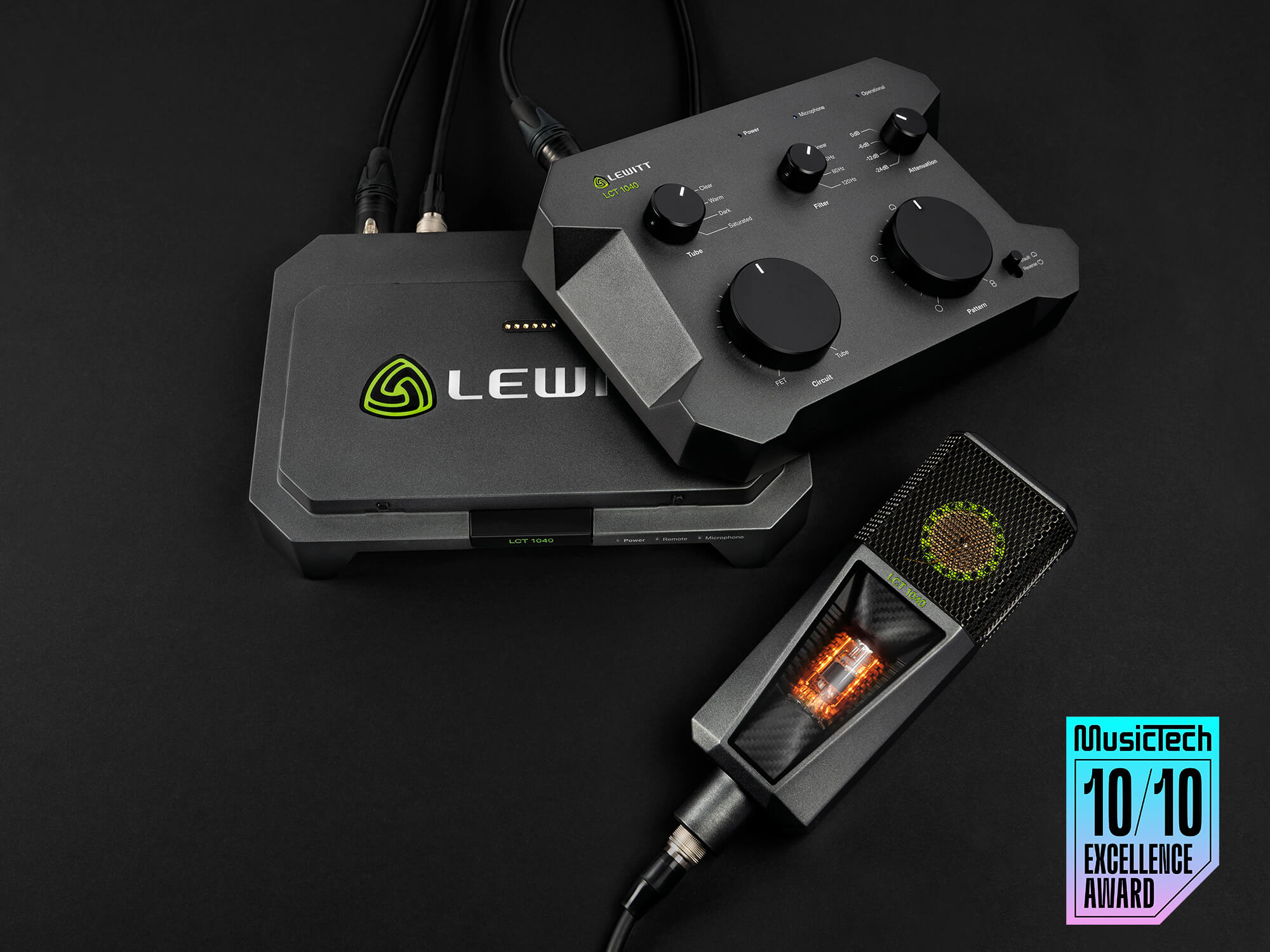
Review Overview
Our rating
10
Our verdict
⊕ Four styles of tube colouration
⊕ Comprehensive remote control
⊕ Excellent shockmount system
⊕ Hugely versatile
⊕ Superb build, design and finish
⊖ No complaints at all
Lewitt Audio’s latest offering is more than just a microphone. It’s a both FET powered and tube-driven transducer with four flavours of thermionic colour that can be dialled in remotely – and we love it.
The LCR 1040 package consists of the mic, a power supply and remote control that presents as a single unit. However, the remote control detaches from the power supply base to provide, well, remote control. These two components are linked via XLR cables (not supplied) so the power supply unit (PSU) can be close to the mic in the studio while the remote control is located in the control room, for example. A dedicated 10-pin Hirose Electric cable is provided to connect the mic to the PSU.
Weighty and purposeful-looking, the microphone’s tube, or valve, is visible through a window at the front of the mic, emitting a warm glow when powered-up. Should the tube be a visual distraction, you can configure the system so that the default rear of the mic becomes the front address side, simply by engaging the switch on the remote control.
The tube selected is an E88CC/6DJ8 type from JJ Electronics. Tube rollers beware though, Lewitt state that this particular tube is integral to the fine-tuned and calibrated system, and swapping it out for another brand will invalidate the 10-year warranty.
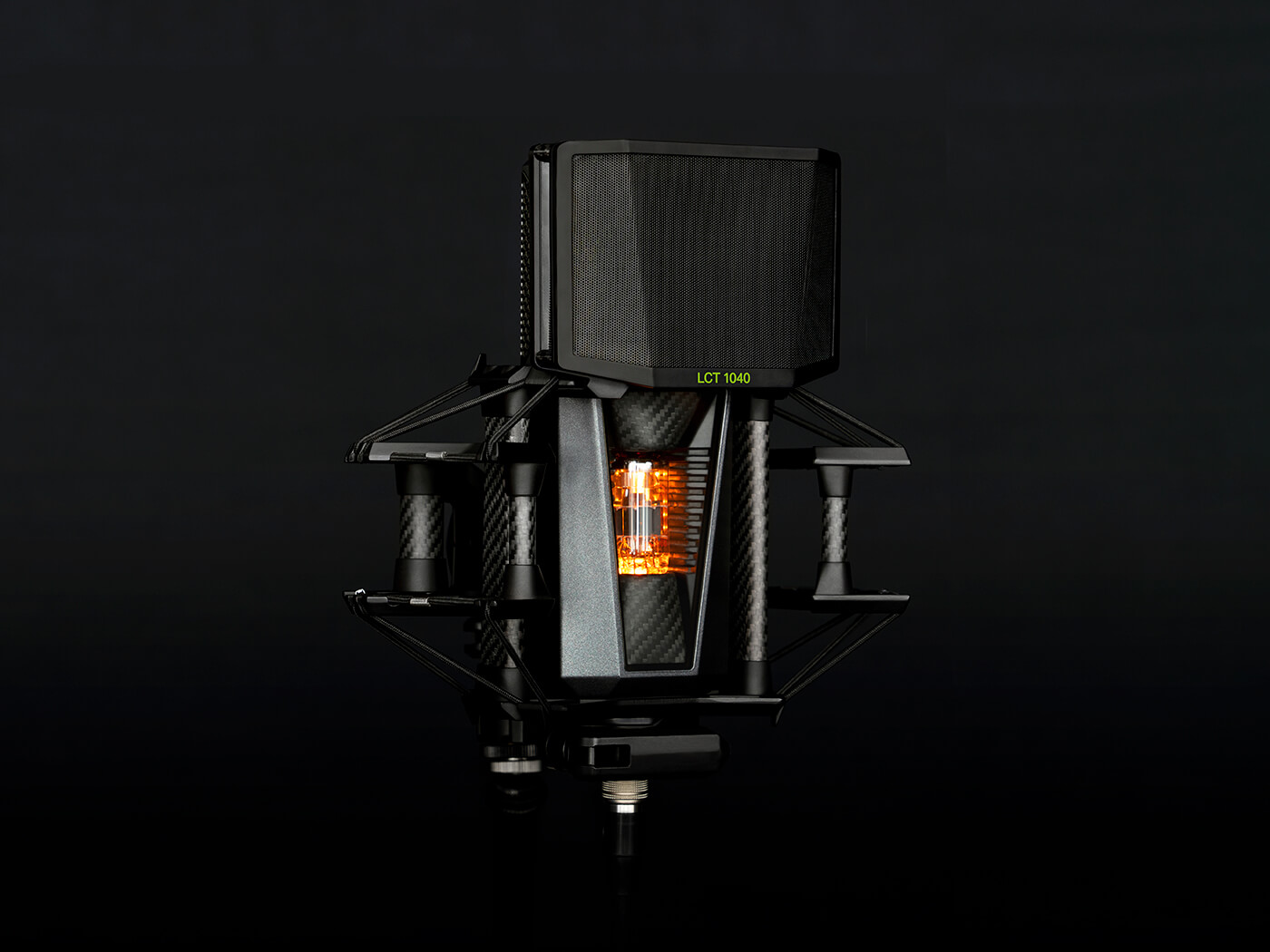
Features on the remote control include switches for high-pass-filtering at 40Hz, 80Hz or 120Hz, and attenuation (pad) at -6dB, -12dB and -24dB. Adjacent to these controls is the switch for selecting one of four available tube characteristics, which are Clear, Warm, Dark and Saturated. Underneath this switch is a rotary control labelled FET at the fully counterclockwise position and Tube at the other extreme, which allows you to dial-in any amount of your chosen tube colour.
Also, as there are XLR connectors on the PSU for both direct FET output and the tube mix, it’s possible to record a single pass simultaneously onto two separate tracks from each output. This is useful for making A/B comparisons and judging when too much or too little tube character has been applied. The final control to highlight is a rotary control for the multiple polar patterns available.
On first inspection, we were concerned that attaching the microphone to the extremely complex-looking shockmount would be cumbersome, yet the quick-release locking mechanism is simple to use and isolates the mic from unwanted vibrations superbly. Similarly, the dual-layer magnetic pop shield clips into place intuitively.
A true condenser design, the mic features a one-inch gold-sputtered capsule and its continuously variable polar patterns are available via the control on the PSU. Both the FET and tube circuits are housed independently in the mic’s substantial housing, however there are no switches on the mic itself as the pad and HPF options are located on the PSU along with the polarity and the LCT 1040’s bespoke tube character controls.
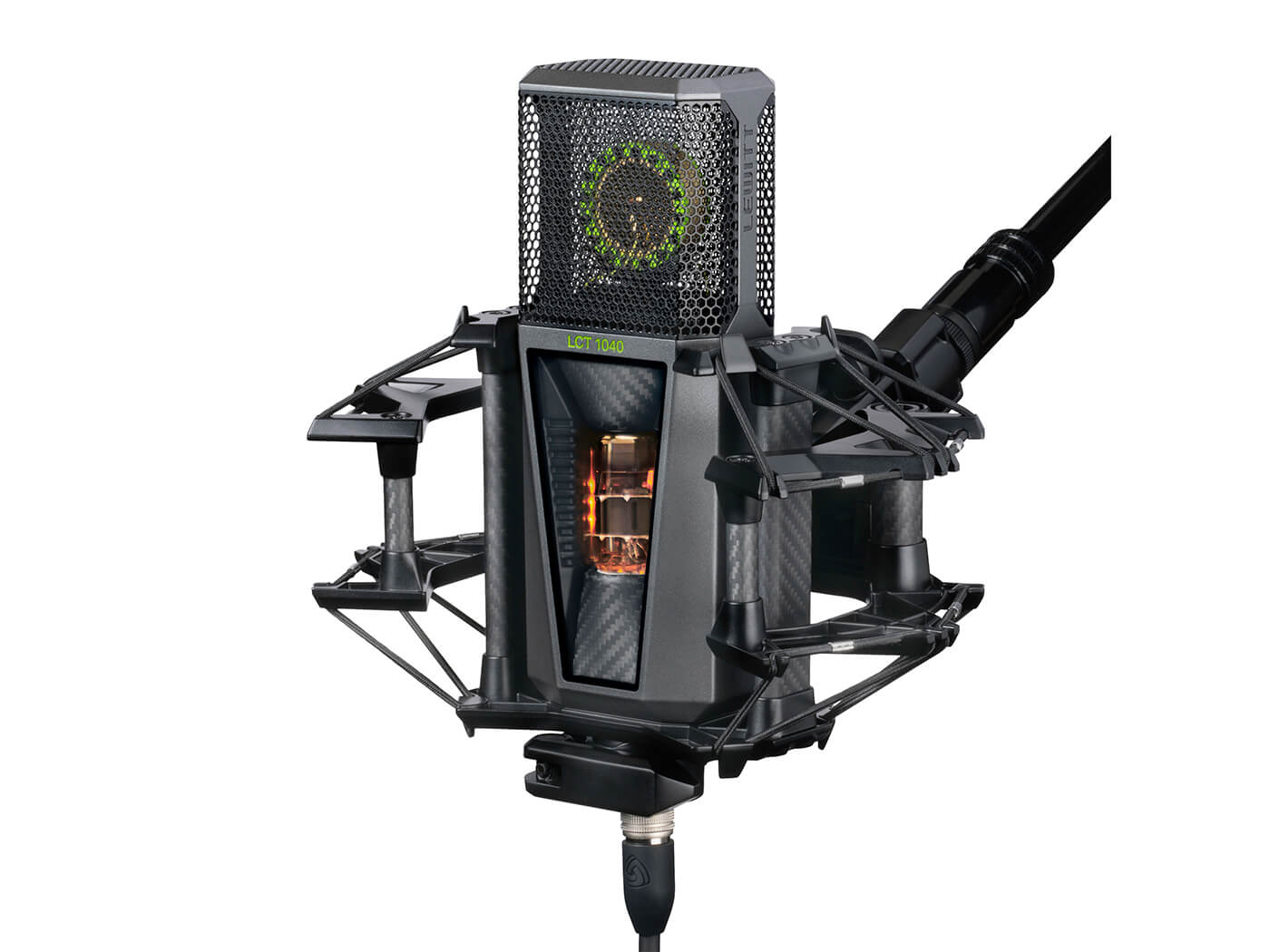
Listening to the FET output reveals the mic’s natural voicing and character, which is remarkably smooth with a clear and open midrange quality. It’s slightly cool-sounding in this mode, with a matter-of-fact nature that doesn’t flatter the signal. But there are no nasty artefacts, such as honking mids or scratchy treble to inhibit your sound; the LCT 1040 is exceptionally transparent to the source material.
Adding some valve beauty to the mix builds on the mic’s inherent neutrality in four distinct ways. The Clear setting, for which Lewitt states the “tube works at technical optimum”, noticeably opens out the upper midrange, making it more harmonically rich, while injecting a healthy dose of top-end sweetness. This setting works brilliantly on vocals, producing similar results to when we use our Neumann U 67 in conjunction with a 16kHz boost from the Pultec EQP-1A. You get a wonderful super-top sheen with an obvious sense of air and space.
Changing to the Warm tube setting, the high frequencies retain their thermionic sweetness but in a more subtle way. More noticeable is the elaboration of the lower midrange, which adds body and, thankfully, warmth to the signal. It’s an ideal setting for intimate vocal performances, where you might wish to expand on the proximity effect of close-mic’d vocals.

Dark tube mode sounds closest to the FET sound, yet the top end is more muted – “tames highs for bright sources” says Lewitt. We concur, finding the top-end gently rolled off to sound even darker then our mid-prominent U 67. We would probably save this setting for problematic sharp sounds or, as we often do with our U 67, boost the extreme high end to offer an alternative to the natural top-boost of the Clear setting.
As you might expect, the Saturated setting gives the most noticeably processed quality to the source sound and works well with dynamic vocalists, for example. The subtle compression effect created reminds us of the sound produced when recording hot onto analogue tape. This setting adds bags of character to audio and we imagine it to be, along with the Clear setting, a go-to sound for many producers.
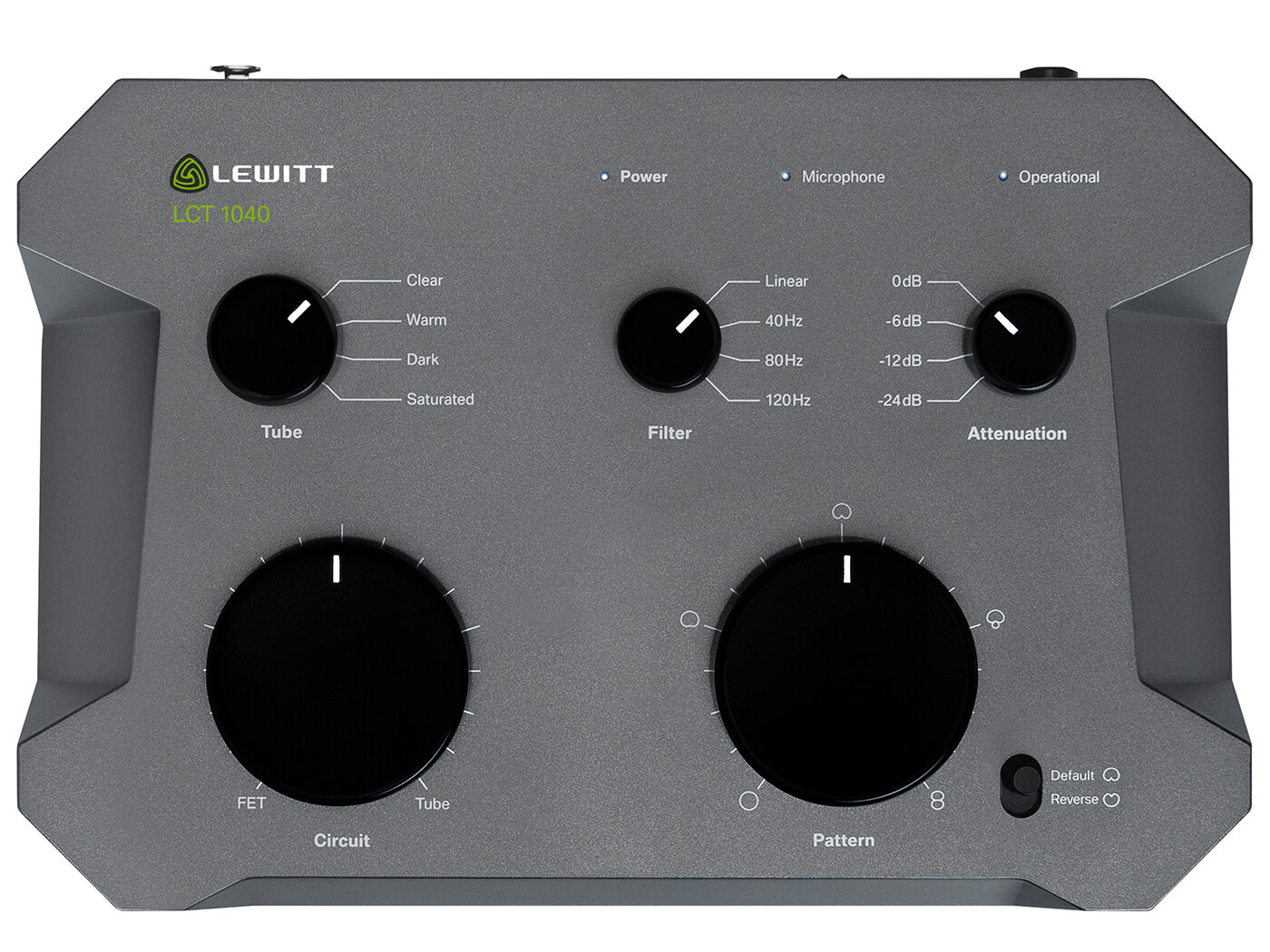
With so many tonal options available by making use of the circuit control, HPF and polar pattern controls, the LCT 1040 system is capable of recording all manner of instruments and voices. What’s more, the distinct sonic signatures of the four-tube settings means that it’s possible to achieve the desired sound without resorting to EQ. Whether it’s the clear, natural sound from the FET output or the more colourful tube settings required, the system produces the various characteristics we often look for when choosing a suitable microphone preamplifier, so it can be used just as effectively with a decent interface as with exotic preamps that offer all sorts of mojo settings.
We love the LCT 1040 system. Even if the microphone existed only with its FET output stage, it would be a world-class product; the tones on offer from the tube circuit take it into a class of its own. Don’t be fooled into thinking this is some sort of tube modelling device though, the signal path is pure analogue all the way, only the controls are digital.
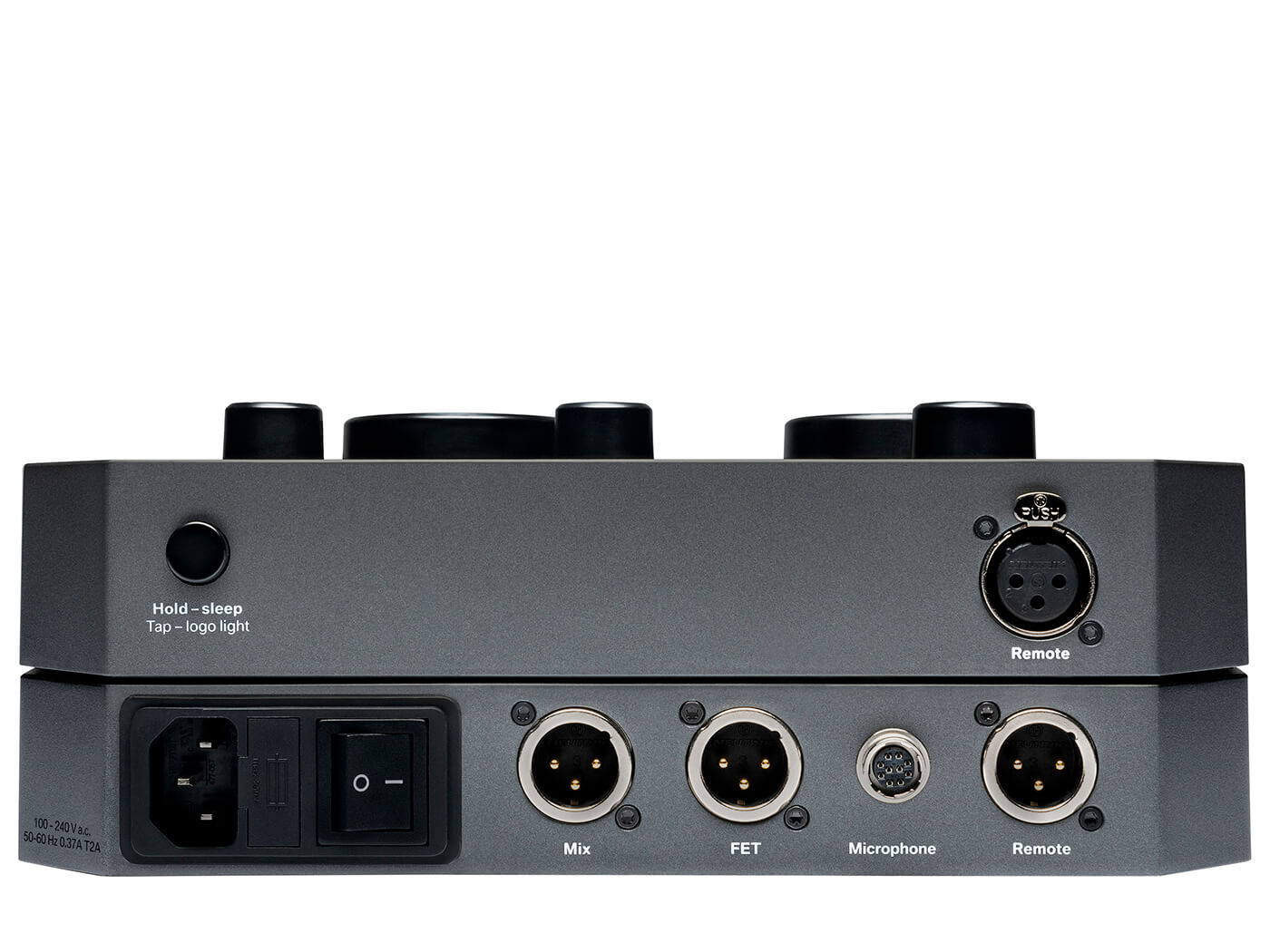
Key Features
- Dual FET and tube circuits
- Variable polar patterns
- Remote control
- Selectable HPF and pad
- Frequency range 20Hz – 20kHz
- £2,999
- Contact Lewitt Audio
- Buy: Thomann, Vintage King